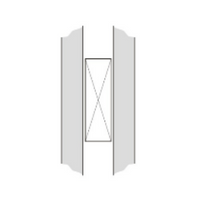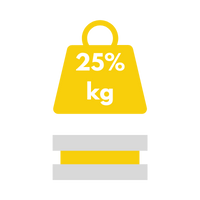We use cookies to make your experience better. To comply with the new e-Privacy directive, we need to ask for your consent to set the cookies. Learn more.
What are the 5 most important measurements for your drawer and sliding door applications?

To help you choose the best telescopic slide for your application, there are five initial measurements you should first consider. The correct measurements of the slide will not only narrow down your search but also help you avoid inaccuracies during installation and, in some cases, increase the likelihood of avoiding common installation issues such as misalignments.
Slide measurement checklist for drawer applications
1. What weight does the slide need to support?
When calculating the load capacity, it is important to include the weight of the drawer and its contents.
Accuride slides can be mounted vertically or horizontally, but keep in mind that when mounting the slide horizontally, the load capacity will be reduced to approximately 25% of the original load capacity. (Refer to the product data sheet, as not all slides are suitable for horizontal mounting.)

Vertical Assembly
100% of the Admissible Load

Horizontal Assembly
25% of the Admissible Load
2. How far do you need the slide to extend?
The extension or stroke is the distance the slide opens, which can be 75%, 100%, or 100%+ of the length of the slide when in the closed position.
For 100% or 100%+ extension, the slide will have an additional intermediate element, meaning the slide will be slightly thicker. Ensure there is available space for the thickness of the slide being considered.

3 – What is the available clearance to fit the slide?
The lateral space is the amount of space available between the drawer slide and the cabinet or chassis. The general recommendation is to allow an additional +0.2 mm to +0.5 mm beyond the normal thickness of the slide.

4 – What is the width of the drawer?
The width of the drawer is an important consideration, as wider drawers are more likely to bending, which can cause excessive wear on the slide. To avoid overloading the drawers, choose a slide with a higher load capacity.
5 – What should be the length of my drawer slide?
We recommend using the maximum slide length allowed for your application. For drawer applications, simply measure the length of the drawer.
Slide measurement checklist for sliding door applications
For most applications, the above conditions need to be considered; however, for sliding doors, the necessary conditions will be slightly different. To choose the correct slide for your sliding door application, it is essential to know the maximum weight of the door, its height, width, and thickness.
What should be the length of the slide for sliding doors?
Calculating the necessary slide length for sliding doors can be a bit more complicated, as it will depend on whether the sliding door is overlay or inset.
For an overlay sliding door, the slide should be the same length as the depth of the application or shorter. If it is longer than that, it will protrude beyond the front of the closing space. This changes the depth calculation—allowing for a tolerance of 3 mm or less.
However, for an inset sliding door, you will need to consider the thickness of the door, so the calculation will be: application depth – door thickness – tolerance of 3 mm or less.
For more information, please contact the specialised team at Reiman.

